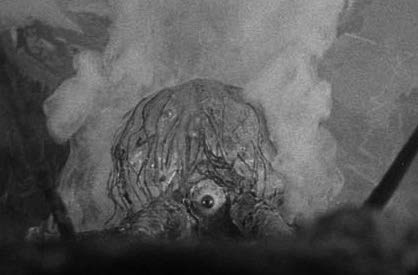“The Omnivorous Eye.” That being the name we’d been thinking of using until only just recently for the monthly column we’re launching with this issue. Had we done so, it would have been in knowing commemoration of a stillborn project of my own from over a decade ago, a utopian semiannual publication I’d taken to calling Omnivore (I even went to the trouble of trademarking the name), which in the event saw only a single prototype issue (with a photo of a bird in the hand on its cover), the few remaining copies of which can be procured from one sole place nowadays (the bookstore of the Museum of Jurassic Technology, naturally, or its website).
So, anyway, Omnivore, in token of the sheer range and breadth of appetite one hopes to be indulging. And “The Omnivorous Eye” as a sort of doff to the great, mad curator Walter Hopps, who, in March 1957, launched what would become the legendary Ferus Gallery in Los Angeles with a group show called Objects on the New Landscape Demanding of the Eye, which, come to think of it, might also have been a good name for this column. Hopps went on to helm the Pasadena Museum of California Art (where he curated the first Marcel Duchamp retrospective anywhere in the world, in 1963), and then the Menil Collection in Houston. (He died in 2005.) Walter liked to say that his was an age-old vocation: he was the one who found the cave and held the torch.
So, right: “The Omnivorous Eye.” Except that then I got Cold Feet. Suddenly over the last several days, I have found myself unable to shake the name’s associations with that other splendid exhalation of late ’50s culture—which, come to think of it, must have been being filmed during the very same months that Ferus was coming into being—that incandescently cheesey (albeit sublimely weird) black-and-white special-effects horror thriller The Crawling Eye.
The film must have screened five hundred times over the local TV station’s 4 p.m. matinees of my preadolescence, endlessly unfurling its tale of a giant, tentacled, free-floating eyeball, swathed in its own (radioactive!) cloud, nested snug in its high alpine redoubt, except on those occasions when it chose to come oozing down the mountainside for a gruesome human repast. Surely I could not have been immune to the eye’s “cold hypnotic stare,” as the film’s trailer has it, “striking fear into the hearts of all, creating a frenzied nightmare for all who beheld it.” Starring Forrest Tucker and Janet Munro.
OK, so maybe not “The Omnivorous Eye” after all. But if not that, what? It occurred to me that...
You have reached your article limit
Sign up for a digital subscription and continue reading all new issues, plus our entire archives, for just $1.50/month.
Already a subscriber? Sign in





